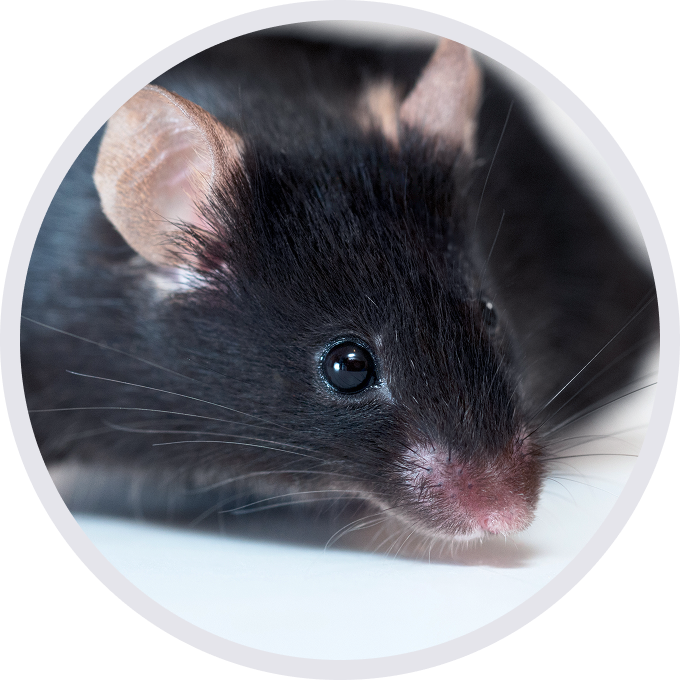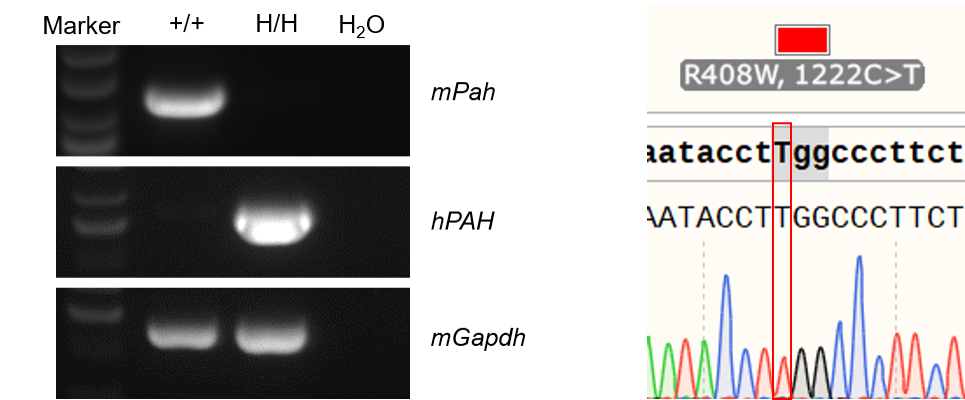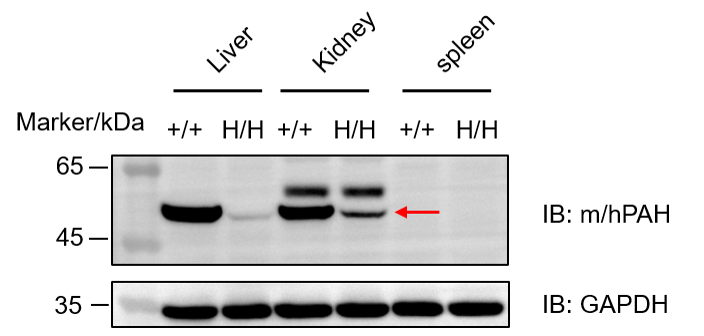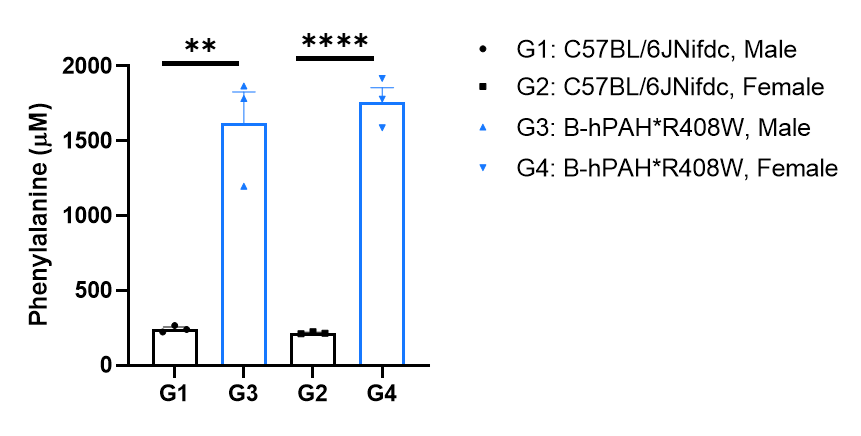
C57BL/6JNifdc-Pahtm1(PAH*R408Q)Bcgen/Bcgen • 113493
Gene targeting strategy for B-hPAH*R408W mice. The exon 12 of mouse Pah gene was replaced by human PAH exon 12 with the R408W mutation in B-hPAH*R408W mice.

Strain specific analysis of PAH mRNA expression in wild-type C57BL/6JNifdc mice and B-hPAH*R408W mice by RT-PCR. Liver RNA were isolated from wild-type C57BL/6JNifdc mice (+/+) and homozygous B-hPAH*R408W mice (H/H), then cDNA libraries were synthesized by reverse transcription, followed by PCR with mouse or human PAH primers. Mouse Pah mRNA was only detectable in wild-type mice. Human PAH mRNA was exclusively detectable in homozygous B-hPAH*R408W mice. The point mutation in homozygous B-hPAH*R408W mice was confirmed via Sanger Sequencing.

Western blot analysis of PAH protein expression in homozygous B-hPAH*R408W mice. Various tissue lysates were collected from wild-type C57BL/6JNifdc mice (+/+) and homozygous B-hPAH*R408W mice (H/H), and then analyzed by western blot with anti-PAH antibody (abcam, ab178430). 40 μg total proteins were loaded for western blot analysis. PAH protein expression was detected in the liver and kidney from both wild-type mice and homozygous B-hPAH*R408W mice (indicated by the red arrow), as the antibody used showed show cross-reactivity between human and mouse PAH. Moreover, PAH protein expression in both liver and kidney from wild-type mice were higher than those from homozygous mice.

Phenylalanine concentration analysis in homozygous B-hPAH*R408W mice. Serum sample were collected from wild-type C57BL/6JNifdc mice (+/+, n=3 per sex, 8-week-old) and homozygous B-hPAH*R408W mice (H/H, n=3 per sex, 8-week-old). All of the mice were maintained on standard mouse chow. Serum phenylalanine (Phe) concentration was measured using phenylalanine assay kit (abcam, ab241000). The serum Phe concentration in homozygous B-hPAH*R408W mice (~1700 μM) was significant higher than those in wild-type mice. Values are expressed as mean ± SEM. Significance was determined by unpaired t test. *P < 0.05, **P < 0.01, ***P < 0.001 , ****P < 0.0001.